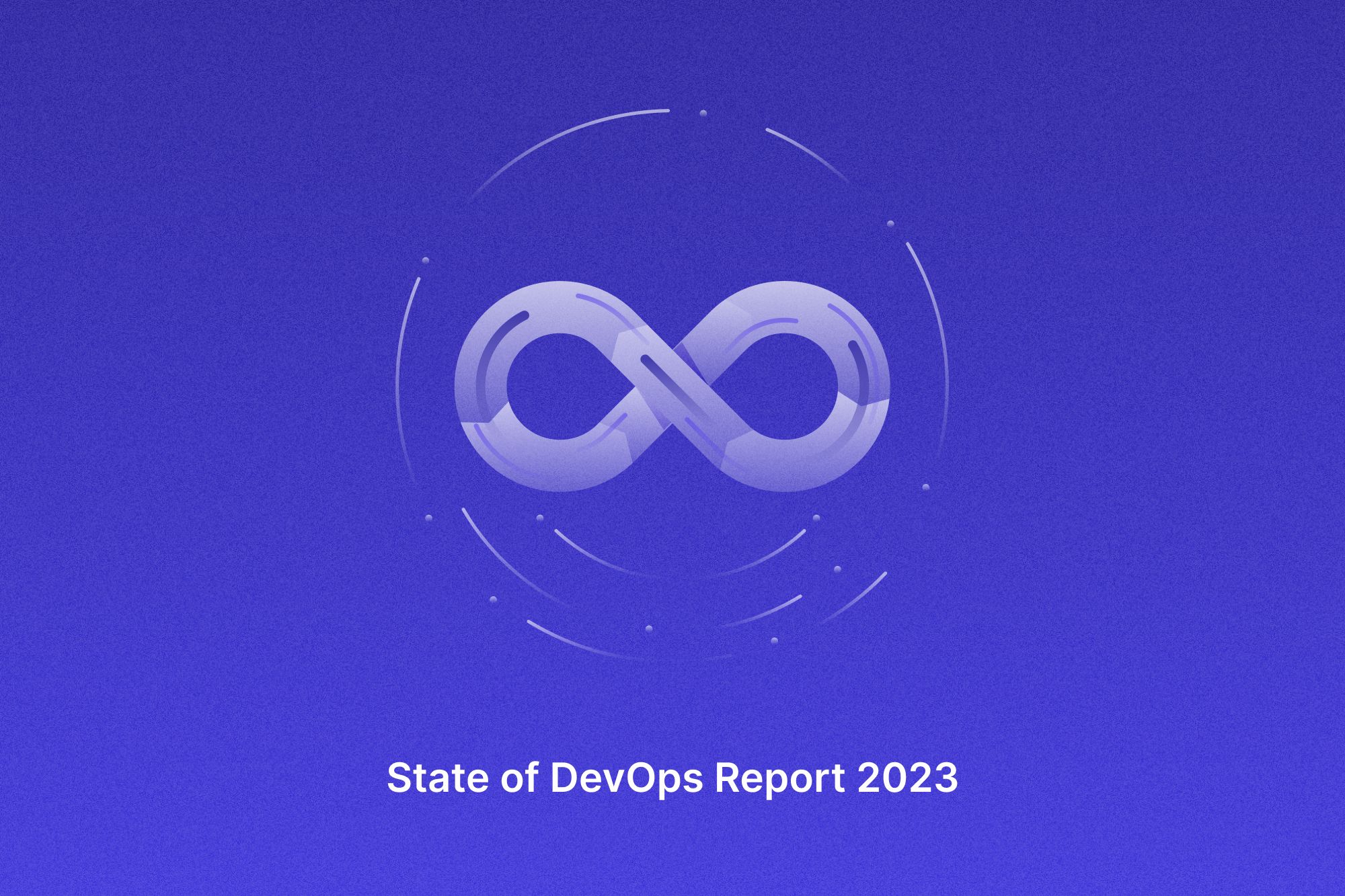Leveraging Google’s state of DevOps 2023 insights for data-driven success

Every year, since 15 years of its inception, engineering managers eagerly await the release of Google's DevOps Insights report. This highly anticipated publication has garnered a reputation for containing invaluable insights that can reshape IT companies. Since strategic decisions in software development find their true North in data-driven engineering, Google’s revelation boosts your DevOps skills and helps achieve exceptional results for your software company.
Let's dive headfirst into 2023 "State of DevOps" insights and explore why engineering managers eagerly await this report, transforming them into actionable takeaways for your business strategy.
Discussing the key findings of Google/Dora’s 2023 DevOps report
The Google/DORA State of DevOps Report is published annually, providing valuable insights into the state of DevOps practices and trends. This report is compiled and released annually to offer an up-to-date and in-depth overview of DevOps practices.
The report typically contains
- Key findings that showcase the state of DevOps, emerging trends, and industry benchmarks
- Real-world case studies on how organizations have harnessed DevOps principles for improving their overall and team performance.
- Insights into technology and tools, security and compliance, and the impact of DevOps across diverse industries
It provides a global perspective, reflecting DevOps professionals' and organizations' experiences and practices worldwide.
Here are the 7 key findings from Google’s State of DevOps report that Engineering Managers are eager to find out:
#1 Crafting a healthy work culture
A thriving work culture is the foundation of high-performing teams, enabling technical agility and ensuring employee success. It's crucial to unearth hidden signs of potential team burnout to foster such a culture. This ethos resonates across Google's State of DevOps Report 2023. It relies on Westrum's typology of organizational culture, which classifies cultures into three types—generative, bureaucratic, and pathological.
The report reveals that teams embracing generative cultures experience as much as a 30% boost in organizational performance. Long-lasting and meaningful changes in an organization's culture require simultaneous efforts from both top-down leadership and bottom-up individuals to drive change.
Achieving similar results requires a thoughtful approach:
- Scrutinize work patterns like after-hours commits and alerts.
- Simultaneously, engage teams in regular Developer Experience surveys to gauge their sense of fulfillment.
- Monitor employee turnover rates to assess how effectively your culture retains talent.
This approach will provide an encompassing view of team wellbeing—engineering analytics platforms like DevDynamics help easily execute them. A robust work culture enhances job satisfaction and increases productivity and innovation, creating a foundation for sustainable success.
#2 Boosting software delivery performance
In an age where time-to-market is a competitive edge, software delivery agility is vital to stay ahead of the curve. The report underlines the imperative of enhancing the same. It unambiguously asserts that speedy code reviews are the core to improved software delivery performance.
We can measure this by measuring the time taken for Pull Request (PR) reviews. Going deep into this metric, you can identify bottlenecks and take remedial action, improving the speed of the product development cycle.
Google's insights show that teams with faster code reviews achieve 50% higher software delivery performance.
Remember that faster code reviews lead to quicker product development cycles and better responsiveness to customer demands, which is essential for staying ahead in the industry.
#3 Championing fair work distribution
In software development, fair distribution of work is important for optimal productivity. Google's findings substantiate that a balanced workload prevents team burnout. By gathering insights on reviewer distribution, you can identify potential work imbalance and redistribute tasks.
Google's insights reveal that underrepresented respondents experience 24% more burnout, emphasizing the importance of fair work distribution.
Measuring and improving workload distribution involves:
- Assessing the distribution of tasks and workload among team members to identify disparities.
- Conducting surveys to measure burnout levels among different groups and identify potential correlations with workload distribution.
Tools like DevDynamics help you achieve a balanced workload for employee well-being and organizational efficiency. It guarantees that your team functions at its best.
#4 Improving performance with quality documentation
High-quality documentation can amplify the impact of your team. Comprehensive, well-structured, and updated documentation aids problem-solving and query resolution. You can understand the gaps by asking your teams for feedback on documentation quality in your developer experience surveys.
Google findings reveal that trunk-based development is significantly 12.8X more impactful when accompanied by high-quality documentation.
Much like the previous reports from 2021 and 2022, it emphasizes the
- Importance of internal documentation within organizations
- Impact on technical capabilities and organizational performance
Google assesses the documentation quality based on the following criteria
- Reliability
- Findability
- Relevance
- Updates
Then, a single score is calculated to represent the overall documentation experience. This evaluation is done overall instead of page-by-page.
To improve your documentation quality and achieve similar results, do the following:
- Use documentation quality frameworks and assessments to evaluate the clarity, completeness, and relevance of documentation.
- Keep note of how often documentation is accessed and utilized by the development team.
DevDynamics offers useful surveys covering multiple areas of engineering analytics. Among them, you can make use of the one for documentation quality. Well-documented processes reduce confusion, enhance collaboration, and accelerate development, all of which are critical for your organization’s success.
#5 Striking the right balance between speed, performance, and user focus
Striking the optimal balance between delivery speed, operational efficiency, and user focus sets winning businesses apart. Google's latest State of DevOps insights highlights a holistic approach to measure and enhance engineering performance through DORA Metrics:
Speed: Metrics such as Deployment Frequency and Cycle Time can be used to measure the software engineering velocity. These analytics gauge the efficiency of the development process, ensuring rapid releases.
Operational excellence: DevOps measures include the Change Failure Rate (CFR) and Mean Time to Recovery (MTTR). CFR signifies the effectiveness of operational protocols, while MTTR helps you understand how fast you recover when something goes wrong.
User-sentiment: A user-centric approach is ushered in through tools like Net Promoter Score (NPS) surveys, which can be crucial to measuring user needs and preferences.
The findings underscore that optimizing this balance results in superior performance and customer satisfaction. You can achieve this by
- Implementing a balanced scorecard approach considering multiple performance dimensions, including delivery speed, operational performance, and user satisfaction.
- Defining key performance indicators (KPIs) for each dimension and regularly tracking and comparing performance against these benchmarks.
#6 Building user-centric solutions
Customer-centricity rules the competitive tech space. Google pushes the concept of integrating customer-focused tools and product analytics using tools like Mixpanel and Amplitude. These offer insights into user behavior, preferences, and feedback, enabling teams to adapt and evolve in sync with user needs.
Google's insights, which reveal that teams focusing on user needs achieve 40% higher organizational performance, underscore the importance of user-centric design.
To determine the success of a user-centric approach, the report highlights three critical areas of focus:
- Understanding user needs to meet their requirements
- Aligning development team efforts with user needs
- Integrating user feedback in the development process to make adjustments accordingly
The results showed substantial improvements in
- Technical practices—trunk-based development, reliability practices, continuous integration, continuous delivery, and loosely coupled architecture
- Organizational, team, and operational performance
- Reducing burnout
- Job satisfaction
- Productivity
The customer-centric approach's cross-functional influence—customer feedback, visibility of work in the value stream, working in small batches, and team experimentation—reinforces its significance in driving success.
You can gauge and align with user needs by:
- Collecting user feedback to understand their satisfaction and how well their needs are being met.
- Evaluating whether the team follows user-centered design principles in product development.
This approach results in more customer satisfaction, higher retention rates, and long-term success, as seen in the State of DevOps.
#7 Harnessing cloud flexibility
Google's finding encourages quantifying infrastructure flexibility by comparing performance analytics in cloud-based environments with traditional non-cloud setups. This juxtaposition provides a measure of the cloud's impact on organizational performance.
Google emphasizes that The National Institute of Standards and Technology (NIST) definition of cloud computing by five essential characteristics predict improved organizational and software delivery performance:
- On-demand self-service
- Broad network access
- Measured service
- Resource pooling
- Rapid elasticity
The DevOps Roundup shows that to benefit from cloud and flexible infrastructure fully, organizations need to rethink how they build, test, deploy, and monitor applications. Simply migrating to the cloud isn't enough; how a team uses it is a stronger predictor of performance.
With the potential for a 22% increase in infrastructure flexibility and a 30% boost in organizational performance, measuring and leveraging cloud infrastructure involves:
- Measuring the time it takes to provision or scale infrastructure resources and assess its impact on project timelines.
- Evaluating the cost savings or efficiency gains associated with using cloud infrastructure.
Cloud adoption ensures scalability, operational resilience, and cost-effectiveness, which are vital for modern tech-driven companies.
Final thoughts
The 2023 "State of DevOps" report from Google presents a roadmap for software companies aiming to harness data-driven engineering for success. From cultivating a robust culture to embracing the cloud, these insights could effectively guide your business through the challenges of the DevOps space. It's safe to say that DevOps has solidified its position, and it is here to stay.
As we move forward, it's crucial to recognize that the foundation of its success lies in its core principles of breaking down silos, fostering continuous improvement, and cultivating inclusive, positive teams.
Ready to drive engineering success?

